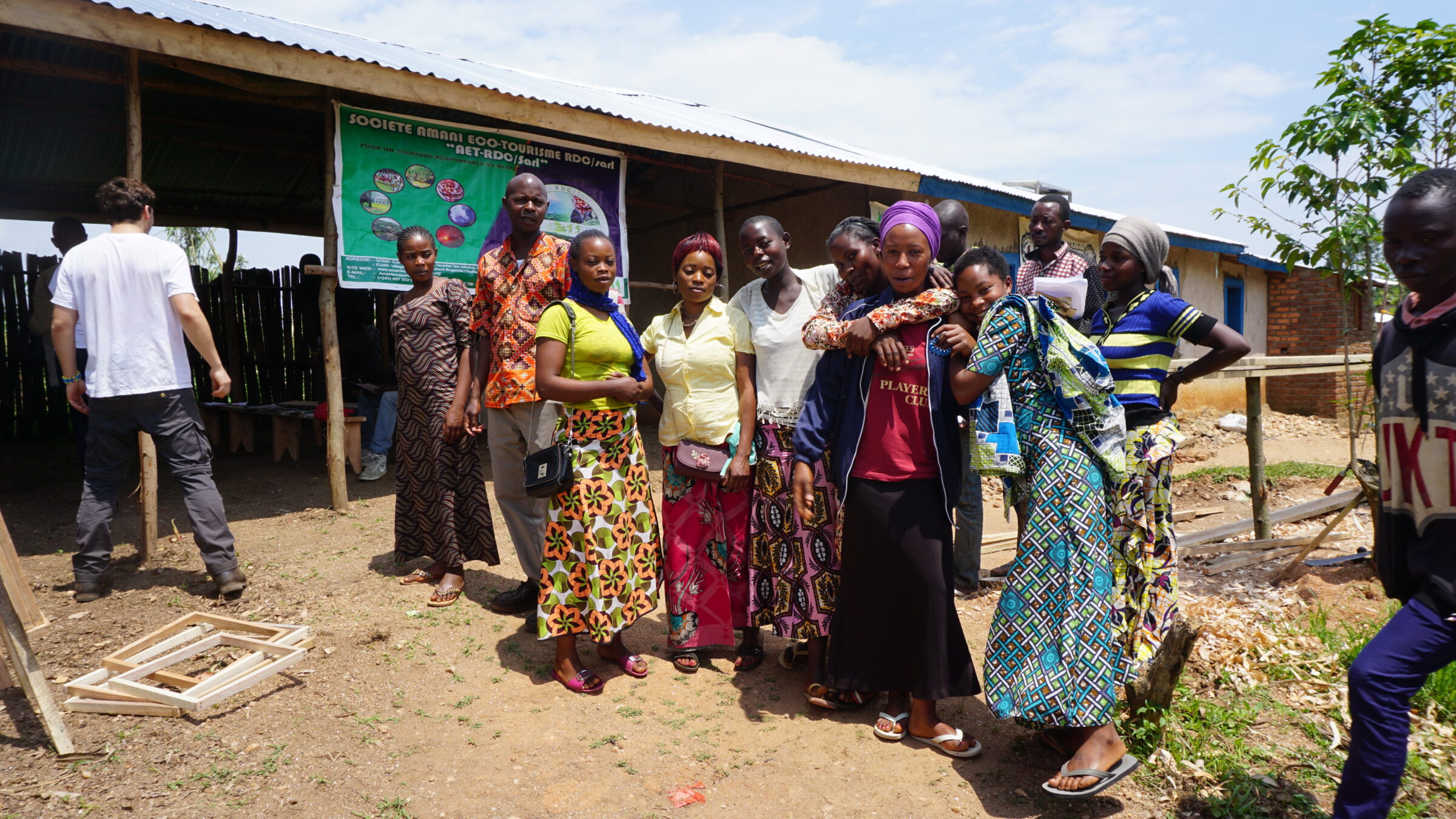Music from Lake Kivu

The Kivu region, situated as a border region between the DR Congo, Uganda, Rwanda, and Burundi, is a melting pot of cultures. Numerous ethnicities with their own languages, traditions, and stories coexist around the lake, which, due to its abundance of fish, also holds significant economic appeal. Unfortunately, deep-seated conflicts exist between these ethnic groups with histories spanning centuries. Central and East Africa have endured terrible times, from Belgian and French colonization to genocides, mass exoduses, famines, corrupt rulers, poverty, and ethnic conflicts – the problems persist. Yet, amidst this, people still find joy in everyday life! The music is cheerful, rhythmic, and invites dancing. Whether in French or one of the many local Bantu languages, Central African music has become an export commodity and has conquered the world. In contrast to the bleak political situation, the region’s music is colorful and joyful. We aim to use this music to better understand the origins of our coffee during our work, diving not only into its taste but also its musical dimension. For this purpose, we invite you to listen to our carefully curated Spotify playlist.
On the Trail of the Slave Trade
Congolese music is now a staple part of playlists in the Colombian Caribbean – even if the lyrics are sometimes not fully understood here. One explanation is the slave trade, during which millions of Africans were abducted for forced labor and brought to distant America from the 16th to the 19th century. This African heritage is omnipresent – in the ethnic composition, in the kitchens, clothing styles, dances, and traditions. In 1972, Nigerian sailors brought records from their homeland (including El Mambote by Congo’s l’Orchestre Veve) to Colombian Cartagena and gave them to local DJs. In the clubs, the African style was a huge success and was danced and celebrated extensively. Particularly the poorer, African population couldn’t get enough of the rhythms. Soon, local artists began to imitate the joyful dances, and Colombian Champeta was born, where African rhythms and melodies are accompanied by Spanish singing. Colombian Champeta groups like Grupo Son San proudly carry the heritage of their enslaved ancestors into the clubs of the Caribbean today, where the audience dances vigorously to the music. This music has long since embarked on its successful journey in the Latino communities of other Latin American countries and the USA.
Export Hit Soukous
The connection between Central Africa and the Caribbean has brought forth some unique music styles. In the late 1930s and 1940s, Soukous emerged in the Congo, blending local musical elements with Cuban and South American rhythms. Soukous is an original music style from the Congo region, also known as Rumba Lingala. Its roots significantly influenced Caribbean music styles like Merengue. By the 1960s, Soukous had become a popular dance style across Africa. The genre term is used differently in various regions; in East Africa, it’s referred to as Lingala, while in West Africa, it’s called Congo Music. Over time, Soukous music has also evolved in Central Africa, including various styles like Kwassa Kwassa and N’dombolo, each associated with its own dance forms. The Parisian scene of the 1980s contributed to the worldwide popularity of Soukous, while electronic instruments were integrated into the music in the 1990s. Today’s globally popular Afrobeat and Afropop have significant roots in the traditional music of the Congo.
N’dombolo
Ndombolo, also known as Dombolo, originated in the Democratic Republic of Congo as a genre of dance music, evolving from Soukous in the 1990s. It is characterized by fast-paced, hip-swaying dance rhythms and percussion-driven music that dominates African dance floors. Genres like Coupé-Décalé and Kuduro, in turn, emerged from Ndombolo. Leading musicians such as Papa Wemba, Koffi Olomide, and Werrason popularized the genre, exploring themes like human relationships and Congolese culture. The dance style involves convulsive hip movements, while the music typically features guitars, drums, and synthesizer-like sounds. Despite initial censorship, the influence of Ndombolo spread globally, influencing French rap and becoming an integral part of African dance culture.
Traditional Music
The musical diversity in the Kivu region is vast. Not all styles have reached other parts of the world; some traditional styles are passed down from generation to generation and celebrated locally. Many of these styles incorporate drums, singing, and dancing, playing an important role in cultural festivities and ceremonies.
Gospel
Christian religions play a significant role in the Kivu region. Thus, gospel resonates in the musical landscape of villages and communities, where African rhythms and melodies blend with Christian texts. In churches and during religious celebrations, gospel serves as an important form of musical expression.
Enjoying Kivu Responsibly
As you roast, grind, brew, and/or simply enjoy this special coffee, dare to listen to the joyful rhythms from our Cumpa Coffee Tracks: Kivu DR Congo Playlist! They tell a significant chapter of world history packaged in danceable compositions. Cheers!